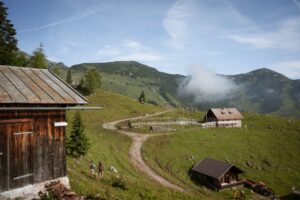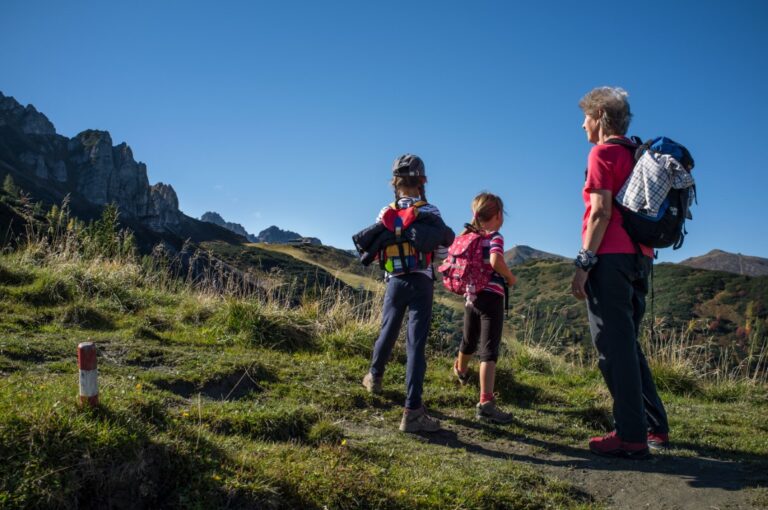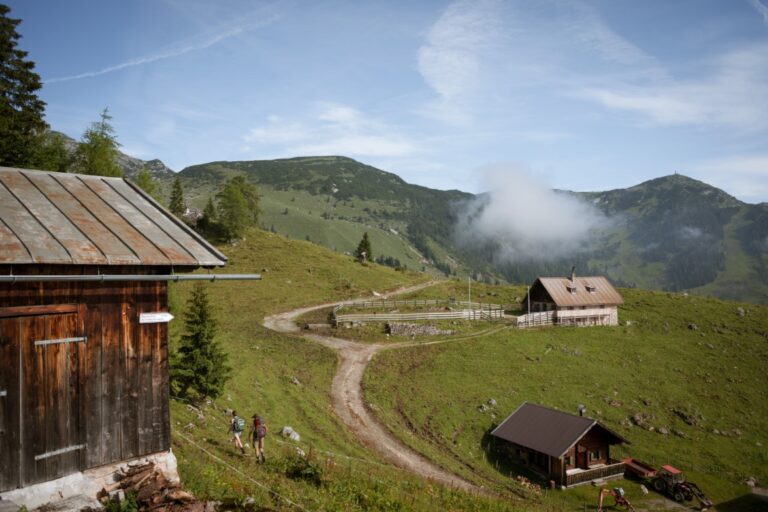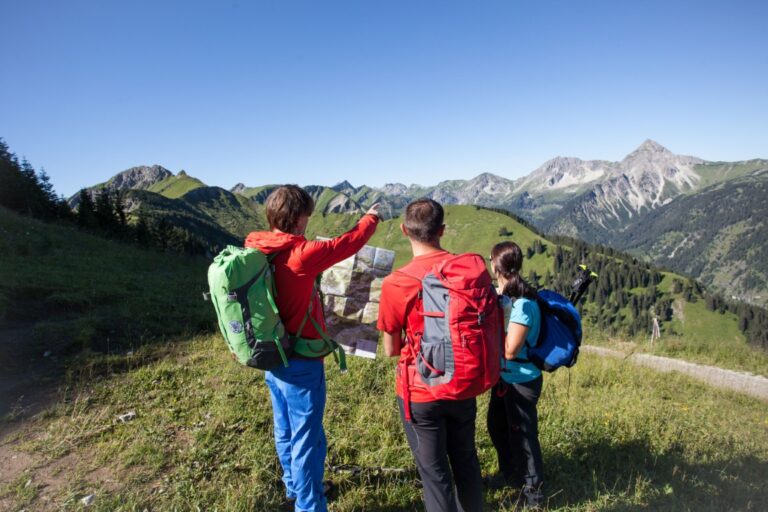Introduction - Tyrol's historical development
The History of Tyrol is characterized by a fascinating mix of cultural diversity and historical significance. Tyrol, a region now divided between Austria and Italy, has a past shaped both by its geography and by the diverse peoples and cultures that have come to this region over the centuries. This rich history has made Tyrol a unique place in Europe, whose legacy can still be felt today.
If you look at them demographic changes, it becomes clear how the population and its structure have made a decisive contribution to shaping the region over the centuries. From the first settlements in prehistory to the various migrations of peoples to modern migration movements - each of these phases has left its own traces and shaped Tyrol's cultural identity.
Contents
The Tyrolean national anthem - a symbol of regional identity
The routes presented are intended to give you a first taste of the multifaceted world of cross-country skiing around Innsbruck. Let these examples inspire you and explore for yourself the rich variety of routes that our region has to offer for cross-country skiers.

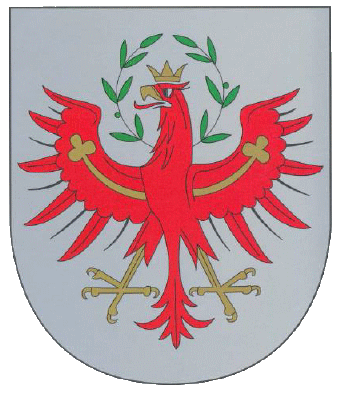
First overview of the history of Tyrol
| epoch | Period | Main events |
|---|---|---|
| prehistory | B.C | First human settlements, hunter-gatherer cultures, transition to agricultural communities |
| First millennium AD | 1 – 1000 | Part of the Roman Empire, cultural and economic exchange, population mix |
| Middle Ages | 500 – 1500 | Political and cultural developments, power structures, trade and the arts |
| Neuzeit | 1500 – 1900 | Economic developments, mining, renaissance, cultural flourishing, urbanization |
| Erster weltkrieg | 1914 – 1918 | Military conflicts, social and material destruction, Treaties of Saint-Germain and Trianon |
| Interwar period | 1919 – 1938 | Political and social unrest, economic difficulties, rise of National Socialism |
| Second World War | 1939 – 1945 | Military operations and air strikes, ideological and administrative realignment |
| post war period | After 1945 | Reconstruction, political reorganization, social change, South Tyrol question |
| Modernity (to date) | 1955 – Today | European Union, demographic change, cultural and economic integration |
The origins - The prehistory of Tyrol up to the first millennium AD
Tyrol's history goes back to prehistory, the period before the birth of Christ, characterized by the first human settlements in this region. This era was characterized by hunter-gatherer cultures that gradually transitioned to agricultural communities. Archaeological finds, such as tools and dwellings, provide insights into this early phase of Tyrol's history.
By entering this first millennium AD Tyrol experienced significant changes. The region became part of the Roman Empire, which had a profound impact on its population structure, culture and economy. The Roman presence brought important infrastructural developments, such as the construction of roads and buildings, and promoted cultural and economic exchange.
This time period was also regarding the Population development decisive. The mixing of the native population with the Romans, later followed by Bavarian and Lombard tribes, led to a cultural diversity that formed the basis for the later development of Tyrol. This period of Tyrol's history is a fascinating example of the dynamics of cultural and demographic changes in a region. Reading tip: The History of Zillertal.
The Middle Ages - A Time of Change and Growth (500 - 1500)
The Middle Ages represent a significant period in the history of Tyrol. This period, which lasted from 500 to 1500, was a time of great political, social and cultural changes. During this era, the foundations for modern Tyrol were formed through the establishment of power structures, the development of trade and the flourishing of the arts.
During the Middle Ages, Tyrol experienced a number of political developments. The region became an important center in the Holy Roman Empire and later a strategic point within the Habsburg Empire. This political importance led to an increased expansion of castles and defense fortifications, which still shape the landscape today.
The demographic trends of the Middle Ages were also of great importance. The population grew steadily, driven by agricultural development and increasing trade. Cities like Innsbruck began to play a more central role in the region, leading to increased urbanization. The population of Tyrol became more diverse, due to trade relations and the mobility of people within the empire.
The Middle Ages were therefore a formative time for the history of Tyrol, in which the foundations for today's cultural and political identity of the region were laid.
Turning point – modern times (1500 - 1900)
The Neuzeit marked an era of significant transformation for Tyrol, which stretched from 1500 to 1900. This period of Tyrol's history was characterized by profound changes in the economy, culture and society, which were triggered by the Renaissance, the Reformation and later the Industrial Revolution.
During modern times, Tyrol experienced significant economic developments. Mining played a central role in the region's economic history, particularly silver and copper mining. This promoted trade and led to an economic boom, which was also reflected in the architecture and cityscape of places like Innsbruck.
At the same time, there were significant ones cultural developments. Tyrol became a center of the Renaissance north of the Alps, which was evident in art, architecture and education. This cultural flourishing contributed to the development of a strong regional identity.
The modern era also brought significant ones demographic changes with yourself. The population continued to grow and urbanization increased. The Industrial Revolution led to a change in the world of work and attracted people from rural areas to cities. These changes formed the basis for the modern social structure in Tyrol.
The world wars and their effects on Tyrol
The First World War (1914-1918) and the Second World War (1939-1945) had a profound impact on the history of Tyrol. These conflicts not only brought immense human suffering and material destruction, but also significantly changed the political landscape of Europe and Tyrol.
During the First World War, Tyrol was the scene of significant military conflicts, particularly on the Italian front. The war years were marked by deprivation and hardship for the civilian population. After the war, the Treaties of Saint-Germain and Trianon led to the division of Tyrol, with South Tyrol falling to Italy. This division had long-lasting effects on the region and its people.
During the Interwar period (1919-1938) Tyrol experienced political and social unrest. This period was marked by economic difficulties and a changing political landscape. The rise of National Socialism and the annexation of Austria to the German Reich in 1938 led to further profound changes in Tyrol.
The Second World War Like the First World War, it had a profound impact on Tyrol. This period was marked by conflicts, political upheavals and human suffering that permanently changed the face of the region.
With the Annexation of Austria to the German Empire In 1938, Tyrol became part of Nazi Germany. This period brought not only an ideological but also an administrative realignment. National Socialist rule led to repression against political opponents, Jews and other minorities. The persecution and deportation of these groups left deep wounds in society.
During the war, Tyrol was the scene of various military operations and air raids that caused significant destruction. The strategic importance of the region, particularly as a transport hub and for the armaments industry, made it a target for Allied bombing. These attacks had a devastating impact on the infrastructure and daily life of the population.
The End of the Second World War saw Tyrol in a shattered situation. The liberation from National Socialist rule in 1945 was a turning point, but also the beginning of a period of reconstruction and reorientation. The post-war years were characterized by efforts to repair the damage caused by the war, revive the economy and reorganize social and political structures.
The Second World War left not only material destruction in Tyrol, but also deep social and psychological scars, which significantly influenced the region's development in the post-war period.
Post-war period and modern developments
The post war period in Tyrol was a phase of reconstruction, political reorganization and social change. This period brought challenges for the history of Tyrol, but also opportunities for the development and modernization of the region.
A central theme of the post-war period was South Tyrol question. After the First World War, South Tyrol was awarded to Italy, which led to tensions and conflicts between the German-speaking population and the Italian government. In the post-war period, these tensions intensified, leading to a series of political measures and ultimately to a statute of autonomy for South Tyrol. These developments had far-reaching effects on the cultural and political landscape in Tyrol.
Another important aspect of the post-war period was the transition of Tyrol from the state treaty to the European Union. Austria's accession to the EU in 1995 was a pivotal moment that opened up new opportunities for economic development and international cooperation. This step strengthened Tyrol's role as an important region in Europe and promoted integration into larger European structures.
The post-war years were also a time of... demographic change. The population continued to grow, and there were significant changes in population structure, including increasing urbanization and migration. These changes influenced the social and economic development of the region and the history of Tyrol.
Overall, the post-war period in Tyrol was an era of renewal and progress, which laid the foundation for today's modern and dynamic Tyrol.
Conclusion - Tyrol's role in the present
In the present, Tyrol presents itself as a region that has preserved its historical roots while at the same time facing the challenges and opportunities of the modern world. The rich history and diverse experiences from the past have made Tyrol what it is today: a lively mix of tradition and modernity.
The current demographic challenges in Tyrol reflect global trends. These include demographic change, the aging of the population and the integration of migrants. These developments require flexible policy responses and innovative social programs to promote social cohesion and economic dynamism.
Tyrol's role in Europe and the world has also evolved. As part of the European Union and due to its strategic location in the heart of the Alps, Tyrol has become a hub for cultural exchange, economic cooperation and political discourse. The region benefits from and contributes to the opportunities and challenges arising from European integration.
In conclusion, it can be said that the history of Tyrol shows a multi-faceted and dynamic development. From its early beginnings in prehistory to its modern role in the European context, Tyrol has developed a unique identity based on a rich cultural heritage while looking forward to meet and overcome the challenges of the future.
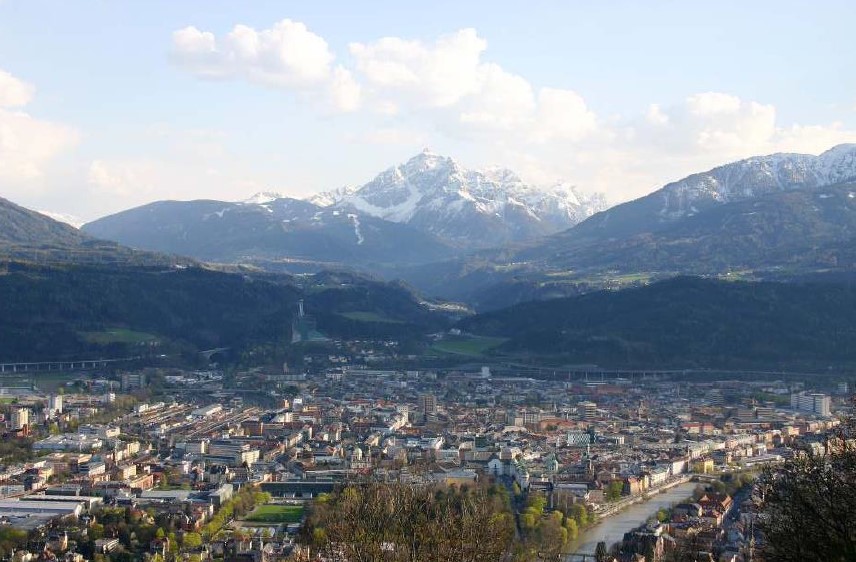
Demography and geography of Tyrol – facts and figures
The population structure of Tyrol is characterized by an interesting mix of historical continuity and modern changes. Here are some key facts:
- population size: Tyrol has a population of around 750.000 inhabitants, with the majority living in the Austrian state of Tyrol and a smaller part residing in the Italian province of South Tyrol.
- Linguistic composition: The majority of the population speaks German. In South Tyrol, Italian is the predominant language of a significant minority.
- age structure: Tyrol is characterized by a relatively balanced age structure. However, as in many European regions, an aging population can be observed.
- Immigration: In recent decades, Tyrol has experienced a moderate increase in immigration, mainly from other parts of Austria and the European Union.
Geography of Tyrol
Tyrol's geographical characteristics are crucial to its cultural identity and economic development. Some important geographical facts:
- Area: The Austrian state of Tyrol covers an area of around 12.640 square kilometers.
- topography: Tyrol is located in the Eastern Alps and is characterized by a mountainous landscape, with the Großglockner as the highest mountain in Austria (3.798 meters).
- waters: Important rivers in Tyrol are the Inn and the Etsch, and there are numerous lakes that are important for both tourism and the local population.
- Climate & Environment: The climate in Tyrol is alpine with cold winters and moderately warm summers, making the region a popular destination for winter sports and summer activities.
These demographic and geographical facts provide a comprehensive overview of current conditions in Tyrol and are crucial for understanding the history of Tyrol and the region in historical and modern contexts.
Photo credit
Images: ©BMI Tyrol


